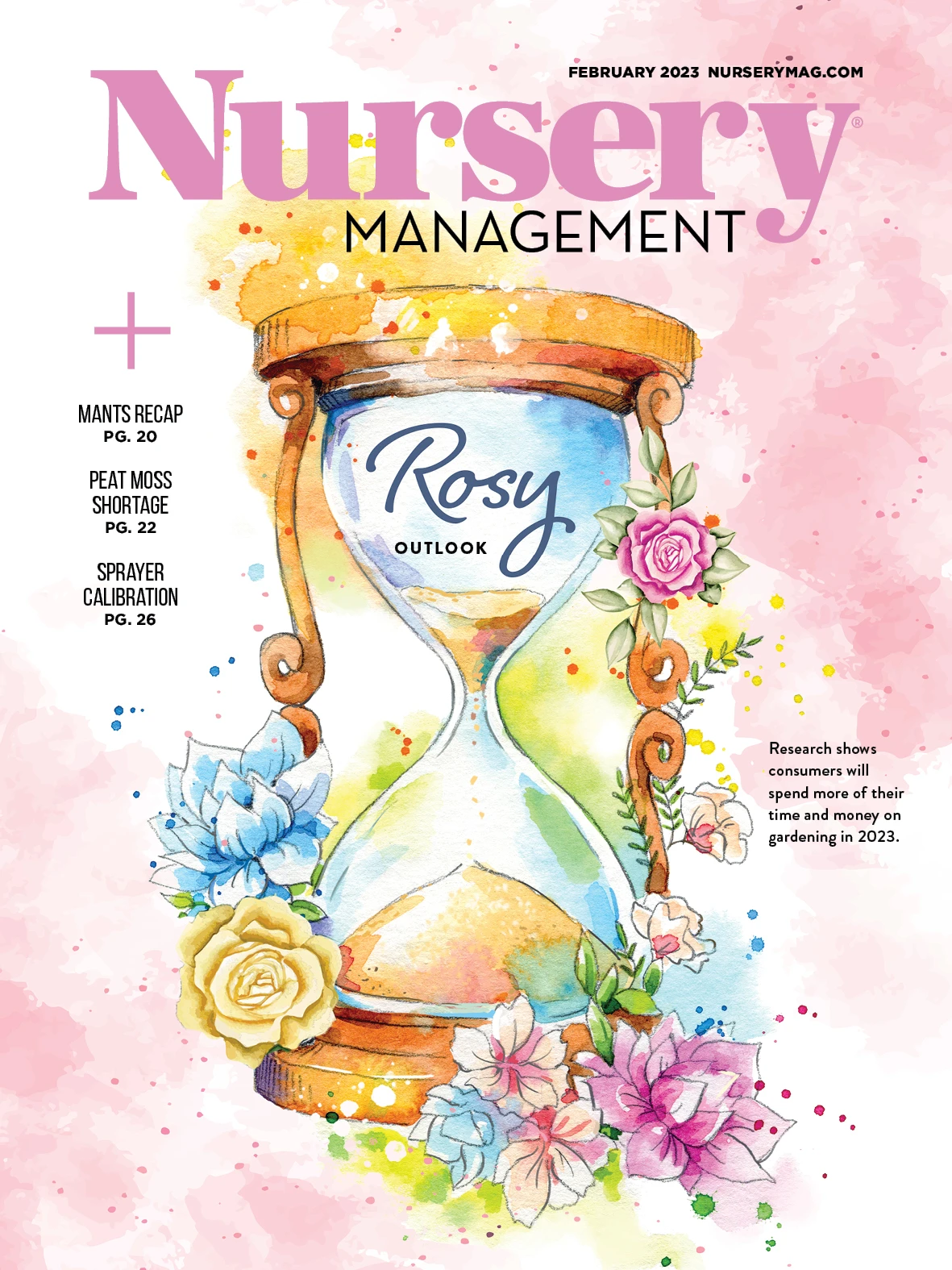

Windmill Nursery, LLC, is a wholesale production nursery that focuses on neonicotinoid and glyphosate-free growing. The Franklinton, Louisiana-based nursery services one-third of the U.S. and is a licensed grower of brands like Endless Summer, Proven Winners, Southern Living Plant Collection, Garden Debut, KnockOut roses and more.
Mycorrhizae is “another arrow in the quiver,” says Michael Roe, Windmill Nursery’s vice president of production. For the last two years, Windmill Nursery has been using MycoApply® Injector Endo from Mycorrhizal Applications. It is an OMRI-Listed concentrated suspendable powder that contains propagules of multiple species of arbuscular mycorrhizal fungi (AMF) on a soluble humic carrier. The arbuscular mycorrhizal fungi colonize the root systems of plants in a symbiotic manner, expand out beyond the plant roots or rhizosphere region of the soil surrounding the plant roots to acquire nutrients and water, and actively deliver these resources to the plant’s vascular system.
Roe says after trialing the product to determine if it was worth its cost, he quickly determined that it was.
“Now every time we stick a cutting, this stuff goes on it,” he says. “Every time we fill up a propagation house, we drench it in.”
In fact, Roe has found it more labor-efficient to apply the mycorrhizal fungi by drenching the trays before sticking cuttings. The mycorrhizal fungi will “sit there until it finds a root that it can latch onto,” he says.
Roe says Windmill Nursery’s low usage of conventional chemicals makes the Louisiana nursery a perfect place for mycorrhizae to thrive. It fits the nursery’s methodology, and applying the product is simple. Windmill’s growers can also add other products to the drench in addition to the mycorrhizae.
“It’s like killing five birds with one stone,” Roe says.
In Windmill’s particular case, they use 40 grams per propagation house. The recommended rate for MycoApply Injector Endo drench application is 20 grams per 100 gallons. Windmill has over 2,400 square feet of propagation houses. The math is simple, and the results have been clear.
“It’s fantastic,” Roe says. “[Plants] root quicker, which translates to be able to pot quicker, and then because of the root density and root mass, they grow faster in the final container.”

Since incorporating mycorrhizal fungi, Roe has noticed a dramatic uptick in rooting speed, which has created a good problem to have: the plants are coming out of the greenhouse so fast, he’s running out of space to put the liners.
Growers that look at mycorrhizal fungi as unnecessary should consider the benefits, Roe says. He’s able to easily connect the dots between the use of this product and the profitability of the nursery.
“Yeah, you can look at it as an added expense, but once you realize the quicker turn — which is your profitability — that helped your plants and the less fungicides you will use, it’s an investment.”
For more: windmillnurseryllc.com; mycorrhizae.com

Explore the February 2023 Issue
Check out more from this issue and find your next story to read.